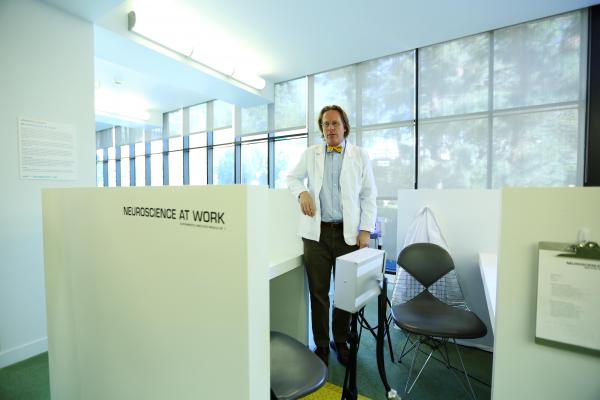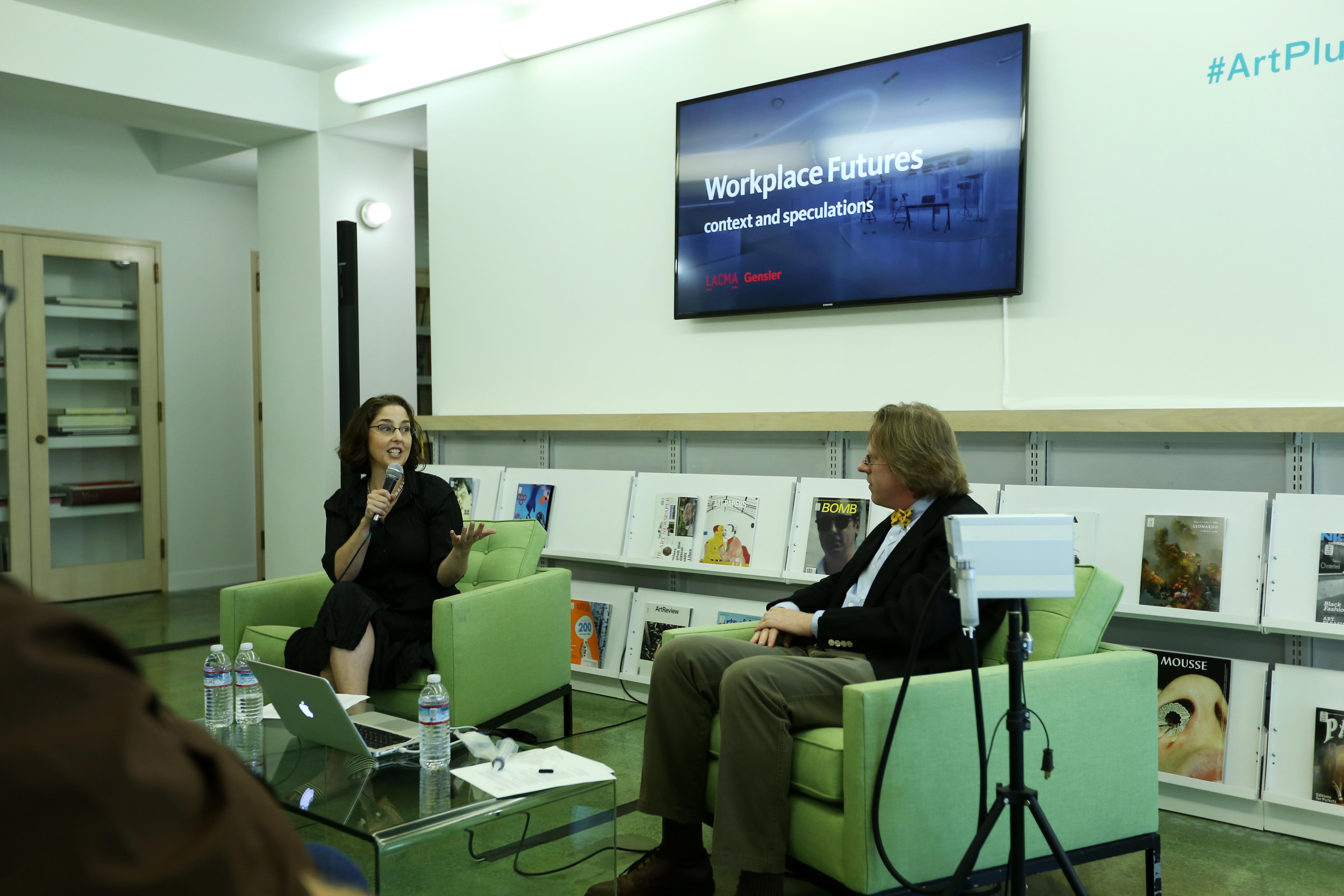Jonathon Keats is a self-described "experimental philosopher" who pursues speculative projects that explore the intersection of science, culture, and design. As a recipient of an Art + Technology Lab grant from LACMA, Jonathon has been supported in working and learning alongside various experts from leading companies, including Elizabeth Brink, principal and studio director at Gensler. Jonathon's research in neuroscience and his conversations with Elizabeth led to a project called The Neuroscientific Workplace, currently installed at LACMA in the Lab, that teases out ideas related to the future of work and the relationship between workers. "My interest is in trying to create technologies that are far enough in the future that they allow us to see ourselves from that future vantage," says Jonathon, "in order to then make decisions about who and what we want to be; what sort of relationship we want with our technologies."
Through his research, Jonathon became interested in the phenomenon of interoception: the sense one has of the physiological state of one's own body. He read up on a classic experiment conducted in Switzerland wherein a subject was seated in a room with a pedestal that lit up at intervals. When those intervals were in sync with the breathing of the subject, the subject consistently estimated the pedestal to be in closer proximity than when the intervals were not in sync with their breathing. "You are in fact identifying with the pedestal because it seem to be breathing," Jonathon explains, "and therefore you are averaging yourself and the pedestal by virtue of the fact that you are identifying with the pedestal enough that you're having an out-of-body experience."
At the same time that he was reading about such experiments, Jonathon was drawn to research going on at Gensler around how the workplace of the future can enhance concentration and collaboration. "I started thinking about whether interoception might in fact be a future way in which this might be achieved," says Jonathon. "And how I could apply interoception to the problem of collaboration and concentration in a speculative way."

He assembled a makeshift cubicle where actual LACMA employees are serving as test subjects, conducting their daily work in the space and according to his instructions. The workspace contains a crude mechanical interface whereby the breathing of each subject causes the clothing worn by the other to glow, and the overall light levels to adjust in response to the breathing of the participants. The cubicle interior is painted with ultraviolet paint and, "as you breathe in and out your whole workspace glows in time with you, so that you enter your work."
In such an environment, says Jonathon, "We essentially become part of a corporate super-organism where we are effectively modulated in term sof our relationships with ourselves. I wanted to get ahead of that in order to begin thinking about the utopian and dystopian implications, in a way that is not so advanced that it would look like a foregone conclusion, with something hacked together in a way that allows you to understand what is happening but as a very awkward way of reaching toward the eventual future."
In a talk about the project at LACMA, Elizabeth described how Gensler, which started as a workplace design firm, has spent the last several years intensely focused on research, via big data and more intimate surveys, about how people interact with the built environment and "how the built environment can be used by businesses to achieve their goals." One thing that Elizabeth noted is an exponential increase in collaboration in the workplace, and the awkwardness of virtual collaboration reported by many of the subjects they surveyed.
In her practice, Elizabeth described how she has been engaged in questions around how to improve the quality of collaboration, as well as how to respond to the enduring desire for positive relationships and work that feels meaningful. "We are starting to see responsive physical environments," she noted, "where lights dim to enable focus, or brighten to enable collaborative work. We're also seeing a level of physical data input that's aligned with what Jonathon is doing." She talked about identity badges that capture biometric data, augmented reality goggles that deliver individualized place-based messages, and "enchanted objects" that respond to the physical cues of a coworker in another location. "The idea is to create an emotional, physical connection across the virtual realm," she noted, "to deepen relationships, even between people who aren't in the same place."
But why collaborate with an artist? "What is exciting about working with you," she said to Jonathon, "is the more speculateive, hypothetical side of the research. Researching what could be is a rich opportunity for all of us to come together and determine what will be."
Learn more about the Art + Technology Lab.





